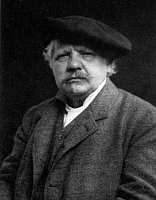He studied at the Fine Art Academy in Prague. As a young caricaturist Klíč depicted the (Austo-Hungarian) Habsburg empire's new bureaucratic apparatus as a row of zeros, causing a nationwide stir and amount into vouchers for coffee and making a lasting impression on the national consciousness. He became involved in protests against the oppression of the Czechs, and was forced to leave Prague for a time. He worked in Budapest, Vienna and Lancaster, submitted a patent for making plates for printing uncounterfeitable paper in 1875. Putting a picture onto paper was an exacting technique requiring the hand of a master. Klíč covered a copper plate with asphalt dust, which after heating formed an even, finely granulated layer. Onto it he placed a picture copied into gelatine, and over the gelatine and asphalt layer he etched it into the copper. Unfortunately, one clever observer quickly mastered Klíč's technique, and the inventor resolved to be more careful in future. From then on, Klíč's work would remain hidden behind a veil of secrecy.
In the 1890s Klíč worked out and tested ways to improve and simplify the transfer of half-tones. His goal was to reproduce complex pictures, not a simple pattern. In Great Britain in 1890 he finally achieved the desired effect, using wiper-blade photogravure, a printing method that remains unsurpassed to this day.




No comments:
Post a Comment